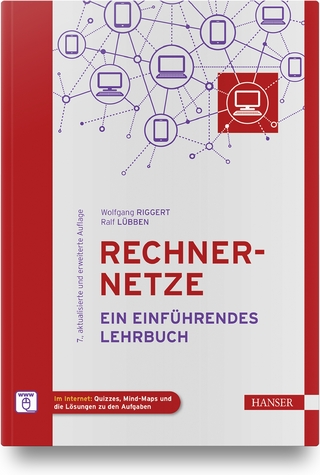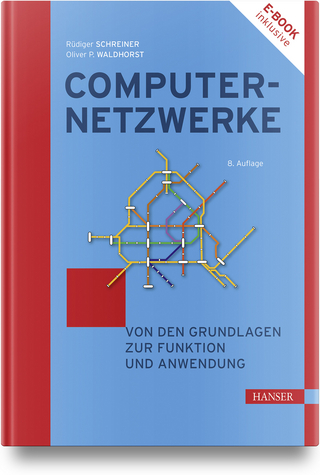
5G System Design
Springer International Publishing (Verlag)
978-3-030-73702-3 (ISBN)
This book presents a detailed pedagogical description of the 5G commercial wireless communication system design, from an end to end perspective, by those that were intimate with its development. The exposition only assumes that the reader is passingly familiar with LTE and builds upon that knowledge. By comparing and contrasting NR with LTE, it allows for quick mastering of 5G. As such it gives concise and highly accessible description of the key technologies in the 5G physical layer, radio access network layer protocols and procedures, how the 5G core and EPC is integrated into the radio access network, how virtualization, slicing and edge computer will fundamentally change the way we interact with the network, as well as 5G spectrum issues.
The 2nd edition of this book significantly enhances and updates the first edition by adding 5G security and Release-16 developments. Loosely speaking, 5G Release-15 can be characterized as being optimized for the cellular carrier eMBB service while 5G Release-16 is the beginning of the optimization of 5G for the vertical industries. It mainly focused on the support of the vehicular vertical and Industrial Internet of Things. As such, we have significantly altered the first edition to cover the key features standardized in Release-16 including: URLLC, V2X, IIoT, enhanced MIMO, unlicensed access, positioning, power savings and IAB. On the network side, detailed discussion covers NR security as well as the newly standardized access traffic steering, non 3GPP access switching and splitting features, non 3GPP access network support and private networks.
Engineers, computer scientists and professionals from those with a passing knowledge of 4G LTE to experts in the field will find this book to be a valuable asset. They will gain a comprehensive understanding of the end to end 5G commercial wireless system. Advanced-level students and researchers studying and working in communication engineering, who want to gain an understanding of the 5G system (as well as methodologies to evaluate features and technologies intended to supplement 5G) will also find this book to be a valuable resource.
lt;p>Wan Lei is a Huawei fellow and currently head of Wireless Standard, Huawei Tech. Co. Ltd. She led the next generation wireless research and 3GPP 4G&5G standardization work in Huawei since 2008. Before then she was a principle engineer in Ericsson Research since 2001. Her main focus areas are network topology and air-interface evolution. She is known as the expert on network topology, system-level evaluation methodology and FDD/TDD convergence in the industry. She is the initiator of 4.5G and 5G DL/UL decoupling with LTE coexistence and one of the main contributors to 3GPP 5G standardization. In the past, she led TDD/FDD frame structure merging, CoMP, LTE-Hi (3GPP R12 small cell enhancement), LTE-V2X and U-LTE (unlicensed LTE) research and standardization. She is also the inventor of the physical layer MI quality model that is widely used in the system level simulation of telecommunication systems, such a model was adopted by 3GPP, 3GPP2, WiMAX as the link to system interface for system evaluation. She has a long experience in the wireless communication industry, with the background of WCDMA, TD-SCDMA, WiMAX, LTE and LTE-Advanced. Her research interest covers spectrum and regulation, duplex evolution, network topology evolution, air interface design specifically for traffic adaptive and interference coordination solution, evaluation methodology and autonomous driving.
Anthony C. K. Soong received the Ph.D. degree in electrical and computer engineering from the University of Alberta. He is a Fellow of the IEEE and currently the Chief Scientist for Wireless Research and Standards, as well as, Vice President for US Region of 3GPP Account Department at Huawei Technologies Co. Ltd, in the US. He currently serves on the Engineering College Industrial Advisory Board of The University of North Texas. He served as Secretary and the founding board member of OPNFV (2014-2016), the chair for 3GPP2 TSG-C NTAH (the next generation radio access network technology development group) from 2007-2009 and vice chair for 3GPP2 TSG-C WG3 (the physical layer development group for CDMA 2000) from 2006-2011. Prior to joining Huawei, he was with the systems group for Ericsson and Qualcomm. His research group is actively engaged in the research, development and standardization of the next generation cellular system. His research interests are in statistical signal processing, robust statistics, wireless communications, spread spectrum techniques, multicarrier signaling, multiple antenna techniques, network virtualization, SDN and physiological signal processing. He has published more than 100 scientific papers and has more than 100 patents granted or pending. He received the 2017 IEEE Vehicular Technology Society James R. Evans Avant Garde Award, the 2013 IEEE Signal Processing Society Best Paper Award and the 2005 award of merit for his contribution to 3GPP2 and cdma2000 development. He is the Industrial Chair for the 2019 Fall IEEE Vehicular Technology Conference (VTC), Industrial Co-Chair for 2020 Fall and 2019 Spring IEEE VTC, has served on the advisory board of 2014 IEEE Communication Theory Workshop, Steering Committee of IEEE Int. Workshop on HetSNet and on the technical program committee, as well as, chaired at numerous major conferences in the area of communications engineering. He has acted as guest editor for the IEEE Communications Magazine and IEEE Journal on Selected Areas in Communications.
Liu Jianghua received his M.S. degree in telecommunication and information systems from Beijing University of Posts and Telecommunications in 2005, and then joined Huawei Technologies working until now. He is currently a technical expert of wireless research and leading the LTE/NR RAN research team in Huawei. Since 2005, he has been working for the research of LTE/NR, and participated in the related standardization in 3GPP. He contributed several hundred contr
Introduction.- From 4G to 5G: Use Cases and Requirements.- 5G Fundamental Air Interface Design.- 5G Procedure, RAN Architecture, and Protocol.- 5G System Architecture.- 5G Capability Outlook: ITU-R Submission and Performance Evaluation.- 5G Market and Industry.- V2X.- Rel-16 System Architecture.- 5G Security.- Conclusion.
| Erscheinungsdatum | 13.08.2021 |
|---|---|
| Reihe/Serie | Wireless Networks |
| Zusatzinfo | XXXIV, 668 p. 363 illus., 300 illus. in color. |
| Verlagsort | Cham |
| Sprache | englisch |
| Maße | 155 x 235 mm |
| Gewicht | 1291 g |
| Themenwelt | Mathematik / Informatik ► Informatik ► Netzwerke |
| Technik ► Elektrotechnik / Energietechnik | |
| Technik ► Nachrichtentechnik | |
| Schlagworte | 5G Core • 5G System Design • edge computing • EPC • Internet of Things and 5G • LTE and 5G • LTE/NR Co-existence • MIMO • mMTC • mmWave • network slicing • New Radio and 5G • polar codes • Radio access technology and 5G • Software Defined Network • URLLC • virtualization • wireless communication |
| ISBN-10 | 3-030-73702-0 / 3030737020 |
| ISBN-13 | 978-3-030-73702-3 / 9783030737023 |
| Zustand | Neuware |
| Haben Sie eine Frage zum Produkt? |
aus dem Bereich


